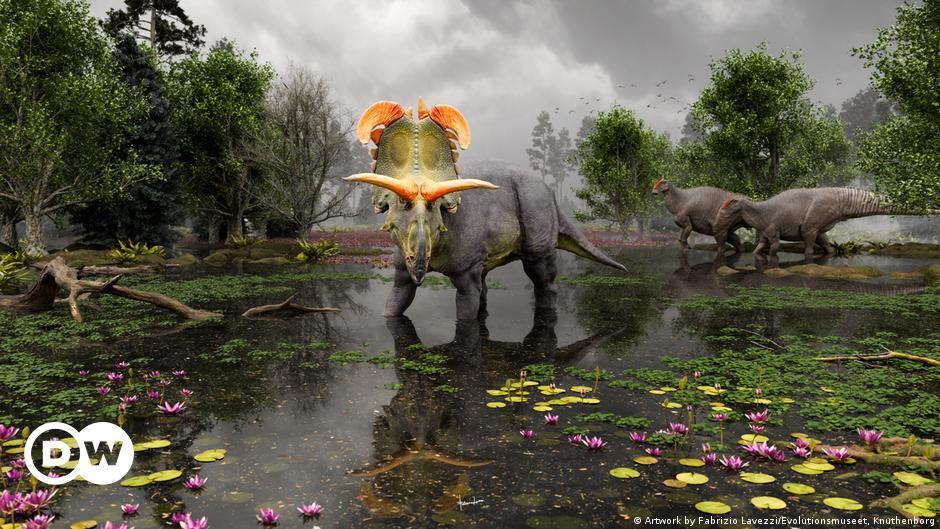Amazing new dinosaur had horns like no other – DW – 06/21/2024

A new species of herbivorous dinosaur with giant horns, called locyceratops rangiformis, was discovered during excavations in a swampy area in Montana (USA), just a few kilometers from the border with Canada, a scientific journal reported PerJ.
This new dinosaur “has the largest frilled horns ever seen in ceratopsians (an infraorder of dinosaurs),” explained Joseph Sertich, a paleontologist at the Smithsonian Institution and Colorado State University and one of the study’s leaders.
More than 78 million years ago Locyceratops They inhabited the swamps and plains along the eastern coast of Laramidia, now western North America.
These four-legged dinosaurs had a mouth full of more than 200 sharp teeth for cutting vegetation, were approximately 6.7 meters long and weighed about five tons.
Locyceratops: “Loki’s Horned Face”
Unique Features locyceratops rangiformis, According to experts, these include the absence of a horn on the nose, huge curved, blade-like horns on the back of the frill – the largest ever found on a horned dinosaur – and a distinctive asymmetrical tip in the middle of the frill. .
The reason the name was given Locyceratopswhich means “Loki’s horned face”, after the Norse sword-wielding god Loki.
The second name, rangiformis, refers to the different lengths of the horns on each side of the frill, similar to the asymmetrical antlers of caribou and reindeer.
Centrosaurus
The research team’s analysis shows that the family of horned dinosaurs, Centrosaurus, underwent rapid evolution and lived in relatively small geographic areas on Laramidia Island.
Research into this new species was funded by the Museum of Evolution, the University of Utah, and the National Science Foundation.
He Locyceratops It was first discovered and excavated by Mark Eatman in the spring of 2019, and is now on display at the Museum of Evolution in Maribo, Denmark.
Research quality replicas are also located at the Royal Ontario Museum, Canada, and the Natural History Museum of Utah, USA.
FEW (EFE, PirJColorado State University)